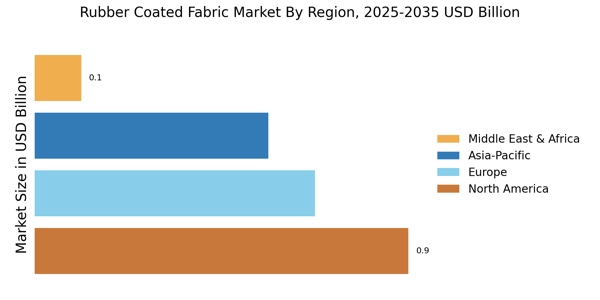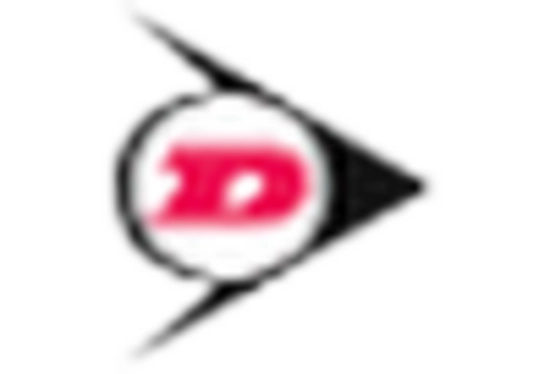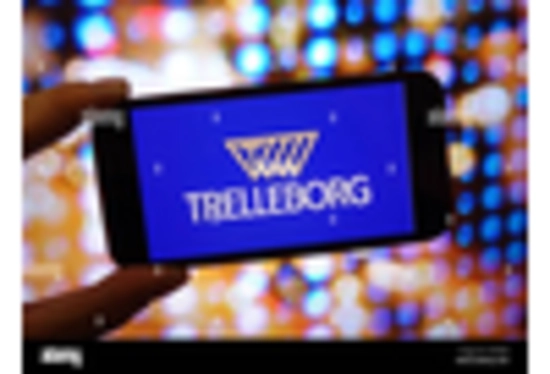Expansion of End-Use Industries
The expansion of various end-use industries is significantly influencing the Rubber Coated Fabric Market. Sectors such as aerospace, healthcare, and consumer goods are increasingly incorporating rubber coated fabrics into their products. This trend is driven by the need for materials that offer enhanced performance characteristics, such as flexibility, durability, and resistance to environmental factors. Data suggests that the healthcare industry alone is expected to grow at a rate of approximately 7% annually, creating substantial opportunities for the Rubber Coated Fabric Market. As these industries continue to evolve, the demand for high-quality rubber coated fabrics is likely to rise, further solidifying the market's position in the broader materials landscape.
Rising Demand in Automotive Sector
The automotive sector is experiencing a notable increase in the demand for rubber coated fabrics, primarily due to their durability and resistance to wear and tear. Rubber Coated Fabric Market is witnessing a shift as manufacturers seek materials that enhance vehicle performance and longevity. The integration of rubber coated fabrics in automotive interiors, such as seat covers and dashboards, is becoming more prevalent. This trend is supported by data indicating that the automotive industry is projected to grow at a compound annual growth rate of approximately 4.5% over the next few years. As a result, the Rubber Coated Fabric Market is likely to benefit from this growth, as automotive manufacturers increasingly prioritize high-quality materials that offer both functionality and aesthetic appeal.
Growth in Outdoor and Sports Equipment
The Rubber Coated Fabric Market is experiencing growth driven by the rising popularity of outdoor and sports equipment. As consumers increasingly engage in outdoor activities, the demand for durable and weather-resistant materials has surged. Rubber coated fabrics are favored for their ability to withstand harsh environmental conditions, making them ideal for tents, backpacks, and sports gear. Market data suggests that the outdoor recreation market is expected to expand significantly, with a projected growth rate of around 5% annually. This trend indicates a robust opportunity for the Rubber Coated Fabric Market to cater to the evolving needs of outdoor enthusiasts, thereby enhancing its market presence and profitability.
Increased Focus on Safety and Protection
The emphasis on safety and protection in various industries is propelling the Rubber Coated Fabric Market forward. Industries such as construction, healthcare, and manufacturing are increasingly utilizing rubber coated fabrics for protective clothing and equipment. These materials provide essential safety features, including resistance to chemicals, abrasion, and extreme temperatures. The market for personal protective equipment (PPE) is projected to grow significantly, with estimates suggesting a compound annual growth rate of over 6% in the coming years. This growth reflects a heightened awareness of safety standards and regulations, positioning the Rubber Coated Fabric Market as a critical player in supplying materials that meet these stringent requirements.
Technological Innovations in Fabric Production
Technological advancements in fabric production are reshaping the Rubber Coated Fabric Market. Innovations such as advanced coating techniques and the development of eco-friendly rubber compounds are enhancing the performance and sustainability of rubber coated fabrics. These technologies not only improve the durability and functionality of the fabrics but also align with the increasing consumer demand for environmentally responsible products. Market analysis indicates that the adoption of such technologies could lead to a potential increase in market share for manufacturers who prioritize innovation. As a result, the Rubber Coated Fabric Market is likely to see a shift towards more sustainable practices, which could attract a broader customer base.


















Leave a Comment